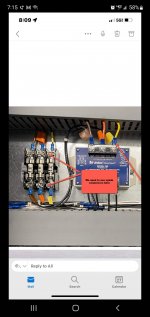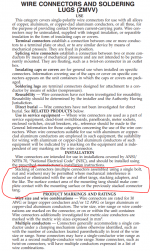Bret Hull
Member
- Location
- Dallas Texas USA
- Occupation
- Electrician
I'm trying to find code references for termination block wiring methods. Specifically, I need to know if it's against code to put two wires under the same #8 screw terminal on a motor saver of both wires have forked crimp terminals on them.
I have done this for years in motor control installations and have a customer telling me it's against code. I just need answers that I'm having trouble finding.
I have done this for years in motor control installations and have a customer telling me it's against code. I just need answers that I'm having trouble finding.



